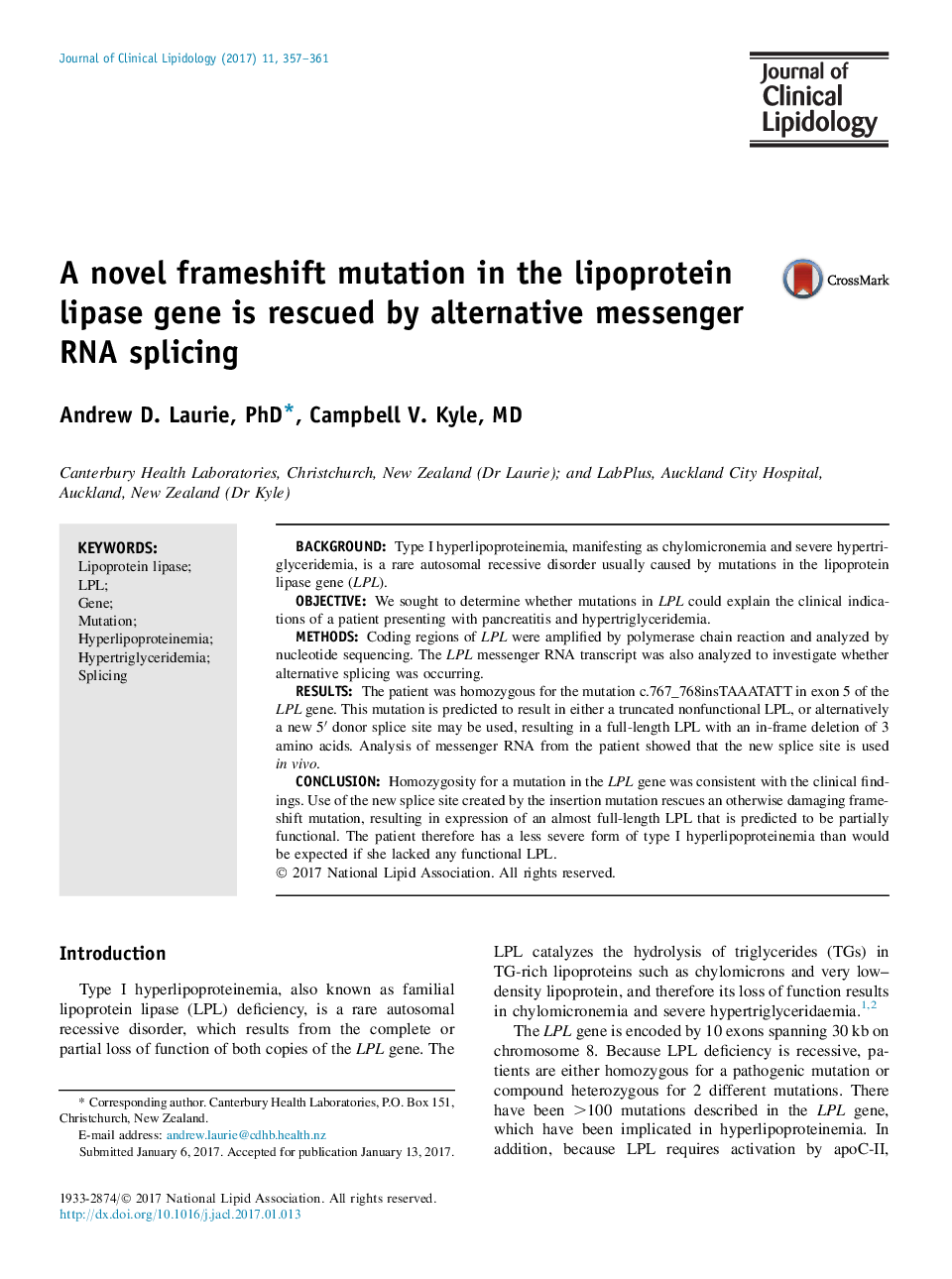| Article ID | Journal | Published Year | Pages | File Type |
|---|---|---|---|---|
| 5615317 | Journal of Clinical Lipidology | 2017 | 5 Pages |
â¢A novel homozygous 8 bp insertion mutation was identified in the lipoprotein lipase gene.â¢The mutation results in altered splicing and an in-frame deletion of 3 amino acids.â¢The importance of investigating the consequences of gene mutations is demonstrated.
BackgroundType I hyperlipoproteinemia, manifesting as chylomicronemia and severe hypertriglyceridemia, is a rare autosomal recessive disorder usually caused by mutations in the lipoprotein lipase gene (LPL).ObjectiveWe sought to determine whether mutations in LPL could explain the clinical indications of a patient presenting with pancreatitis and hypertriglyceridemia.MethodsCoding regions of LPL were amplified by polymerase chain reaction and analyzed by nucleotide sequencing. The LPL messenger RNA transcript was also analyzed to investigate whether alternative splicing was occurring.ResultsThe patient was homozygous for the mutation c.767_768insTAAATATT in exon 5 of the LPL gene. This mutation is predicted to result in either a truncated nonfunctional LPL, or alternatively a new 5Ⲡdonor splice site may be used, resulting in a full-length LPL with an in-frame deletion of 3 amino acids. Analysis of messenger RNA from the patient showed that the new splice site is used in vivo.ConclusionHomozygosity for a mutation in the LPL gene was consistent with the clinical findings. Use of the new splice site created by the insertion mutation rescues an otherwise damaging frameshift mutation, resulting in expression of an almost full-length LPL that is predicted to be partially functional. The patient therefore has a less severe form of type I hyperlipoproteinemia than would be expected if she lacked any functional LPL.
